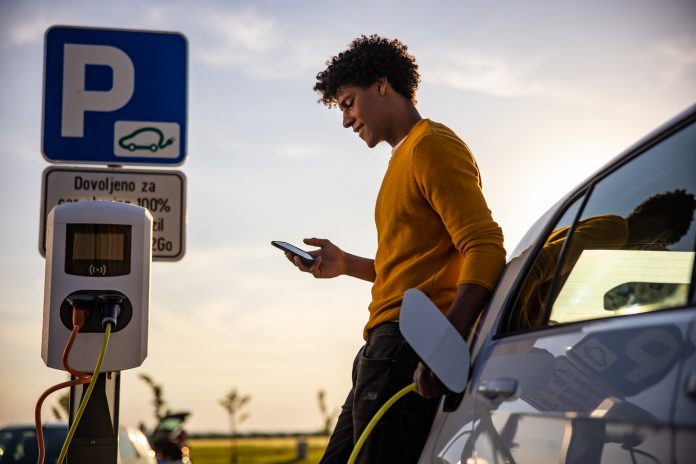Sam Illsley, Head of Public Sector at Mer, explains why working with trusted partners can help to create a strategy and turn it into reality when it comes to EV public charging
Like all major changes to UK infrastructure, local authorities have the chance to be the true changemakers. However, the complexity of the task, access to funds, and need for specialist knowledge and experience means implementing the change can be difficult. Here, I explain why working with trusted partners can help create a strategy and turn it into reality regarding electric vehicles (EVs).
The UK: Towards electric vehicles
The transition to electric vehicles (EV) is essential to the broad electrification of the UK’s economy. To facilitate a change requires planning and practicality. There is a significant shortfall of EV public charging, without which large swathes of different local and regional communities will continue to go underserved. But ensuring a swift rollout of public EV charging infrastructure is no small task.
Alongside public requirements are the needs of commercial and council-run fleets, too. The latest report from RECHARGE UK estimates that the UK needs to achieve 108,000 GWh public charging capacity by 2030, which will later triple by 2050.
Although UK local authorities’ broader net zero commitments are not yet legally binding, it’s only by electrifying one of the largest sources of carbon emissions – ground transport – that the UK can realise a pathway consistent with 1.5 degrees of warming. New legislation, suggested in response to the government’s Future of Transport Zero Emission Vehicles consultation, will soon mandate local authorities to produce local charging strategies.
The mounting, soon to be legally enforced, pressure to change can be daunting, and the ins and outs of drafting a charging strategy are complex. This is where the support of experienced partners comes in.
EVs: The complex charging needs of the public and fleets en route
Provisioning resources for diverse communities, whether EV chargers or regeneration funds, is difficult. Rural communities often don’t have enough public charge points. However, households often have driveways where EV drivers can install their own. Driveways are rarer among urban populations, making public charge points essential, and they rely more heavily on public transport, which also needs transitioning to EV.
Local authorities must find a balance between achieving effective chargepoint coverage and ensuring their infrastructure encourages more EV uptake. While this is a challenge, the government’s consultation showed that over 70% of respondents want it to be their local authorities that drive change forward.
With the support of trusted partners and their constituents’ encouragement, local authorities can be the true changemakers in the UK’s transition away from fossil-fuel-powered vehicles.
However, the focus on EV public charging cannot come at the expense of fleet or commercial charging. Local authorities’ role extends beyond the public alone and must support commercial activity in their regions. In the long run, commercial fleet drivers will use public charging infrastructure for EVs similar to the fuelling infrastructure for petrol and diesel vehicles. En route top-ups will be needed, and this can be achieved by strategically placing rapidcharging hubs.
EV public charging: Local authorities must look inward
EV public is not the end of the line, and local authority fleet managers must also face the challenge of transitioning their own fleets. This is an additional burden and a significant challenge in itself. Often, these projects require costly, drawn-out upgrades to the grid to ensure enough power to charge a fleet, though much can also be achieved through smart load management of chargers on site.
The operational requirements of the varied council-run fleets also necessitate bespoke charging solutions. These can include installing battery storage or on-site generation to ensure larger, power-hungry vehicles can charge alongside others. This only adds to the complexity of the project.
In the background of all of this is reputation and public perception. Bad transition management can lead to a negative perception of EVs, discouraging drivers from making the change. When millions of pounds of council-run fleets are left unused or must rely on fossil-fuelled generators to charge, this creates a negative image with the public and makes it more challenging to get stakeholder buy-in for future ‘green’ projects too.
Creating unique, long-term EV solutions with access to funding
Using a trusted charge point operator can help local authorities create charging solutions that meet the needs of many vehicles and drivers. They can help assess locations for suitability and plan and install the right combination of charge points. Urban charging hubs in well-positioned areas are a prime example.
Focusing on select areas and centralising power avoids the need for multiple larger grid connections, causing less trenching and disruption to the area and grid. Couple this with
ultra-rapid chargers up to 400kW capacity, and en route fleets and residents can charge in 10-20 minutes.
EVs: Install bespoke charging solutions
On top of this, working with an experienced charge point operator will ensure local authorities can easily create and install bespoke charging solutions. If a site needs on-site
generation or batteries, that complex task will be simple. Many sites will also require smart load management, which only a small number of chargers are currently capable of, such as those deployed by Mer.
Smart chargers automatically monitor the available capacity and distribute it evenly between the chargers at a site as vehicles come, charge, and go. This ensures the public can charge as fast as possible based on available power and can help balance the power requirements of complex council-run fleets.
More than 90% of local authorities do not currently have charging strategies. Alongside time and complexity, money is one of the most significant barriers. Mer can help local authorities access different streams of funding, such as the Local EV Infrastructure (LEVI) Fund, the On-Street Residential Chargepoint Scheme, and the Workplace Charging Scheme.
EVs: Mer’s solutions for local authorities
As EV public charging strategies become a legal requirement, Mer can support local authorities in shaping and realising those strategies to ensure a successful,
long-term change in public infrastructure. Find the right EV public charging partner by exploring Mer’s solutions for local authorities.
















